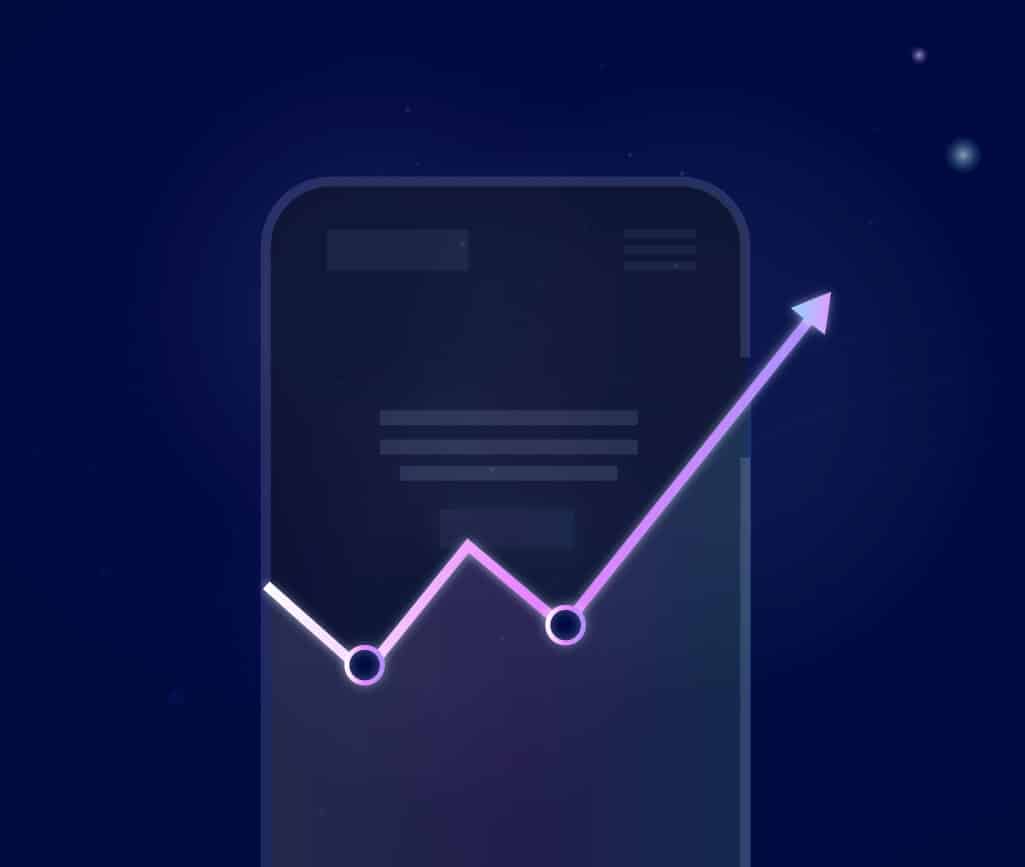Design
13 minute read
12 Biggest Site Redesign Mistakes You Should Avoid.
LAST UPDATED:
April 17, 2024


Your website is the virtual face of your business.
Whether it’s a freelance portfolio or a million-dollar ecommerce site, your website design and functionality is an indispensable element in generating revenue.
In this increasingly digitally-dependent world, how your website looks will determine if people should trust you and do business with you. It’s do or die for your ROI.
Web technology falls into the ever-changing sphere. Unless you keep up, your website can go down and out before you know it.
This guide will tell you if it’s due time for a revamp.
So if you’re thinking of revamping how your website looks and how it works, should you just go ahead and change things haphazardly?
You see, redesigning your site is a tricky process. Unless you do it right with the proper website redesign project plan, you’ll have to deal with repercussions.
If there’s a right way to do things, there’s also the other side of the coin. So in this post, we’ll talk about 12 of the worst website redesign mistakes you should avoid.
Let’s get right to it.
If you don’t do your best to avoid making redesign mistakes, you’ll have to deal with regrettable risks:
Website ranking will go down, fewer and fewer people will see your website when they make queries on search engines
- You will lose leads – your potential clients
- Your marketing efforts will go to waste
- Your brand can get discredited in the industry
- You’ll be giving undue advantage to your competitors
- Your business can close down
Redesigning a website is not as easy as hiring a web designer and telling him how you’d want the website to look. It involves more than that.
Many businesses made mistakes that cost them. But you can avoid them.
Here are the biggest website redesign mistakes you dodge altogether.
Not Checking Previous Analytics, Current Web Design, And Feedbacks
Relying on gut feeling or peer opinions alone is a formula for a website redesign disaster.
While you might already have a new design for your website in mind, checking your previous analytics on your current design will help you answer the question of why you need to revamp your website.
Starting with analysis and feedback will ensure your redesign efforts will go in the right direction, your budget won’t go to waste, and your income goals are met.
Make a list of the outdated features of your website, another list of functional technologies, and elements that are not on your website yet.
You might need to take on a more functional website builder than the one your first used and migrate your data.
You should also check which pages have the least visits, how many pages a unique visitor visits and what path he takes, the bounce rates for each page, and other important KPIs.
If you haven’t utilized Google Analytics yet, now is the best time to do it. This free analytics tool will help you know your website’s weak and strong points and help you track visitor behavior when on your website.

When you have measurable data in place, it’s easier to see what needs to be changed and which pages to prioritize.
Another thing you can also do is to use a heat map to check which parts of your web pages have the most engagements. This will help you to see what you just changed and what you should retain in your current design.
Lastly, you should also consider feedback. When choosing a web designer to do the revamp, it’ll be helpful to tap a couple of them and ask for an initial analysis of the website and what they plan to change.
This way you get expert feedback and you’ll also get to choose the best person to do the job.
Not Testing Enough
Other than checking for analytics, before you can do the actual website redesign, it will be helpful to do the following testing:
- Functionality
- Testing third-party integrations
- Setting up 301 redirects
- Cross-browser testing in the computer, tablet, and mobile phone
- Checking for on-page SEO
- Grammar and spelling check
- Load speed check
Testing for these will help you see what already works well so you can continue implementing it on the revamp.
But the testing doesn’t stop there. The same test still has to be done right before and after the launch.
This extensive testing process will ensure lapses will be taken care off so no blunders will arise and is bug-free once the website is fully operational.
Additionally, you’ll be avoiding the risk of applying the same outdated logic and structure from your previous design. Many testers this has been a common blunder for revamping websites.
Not Setting Scalable Goals
After gathering analytics insights and doing some testing, now you have the data needed to see why your website needs a redesign by identifying loopholes and what you should change in it.
Once you have the data, you’ll clearly see what problems you’ll be solving, challenges that need to be addressed, resources you’ll be needing, and what comprises a successful website redesign.
For example, if you’re an eCommerce site like Mannequin Mall and 3Wishes (a costume store), a problem you can see during analysis and testing is a huge drop from the add-to-cart page to the purchase page.
Seeing this, you can then set a goal to see fewer abandoned carts and more conversions.
Or if you have a review website like Medical Alert Buyers Guide, you found out from analysis that website visitors have a huge problem with navigation. You then set a goal of making the navigation easier by reducing the visual clutter on each page.

Setting goals will set the right perspective for your redesign project. This way, you can also easily determine if the redesign project was a success.
Otherwise, you’ll have a hard time handling manpower, redesign budget, and also choosing vital integrations.
Without a goal in mind, it’ll be easy for you to change plans at the very last hour, wasting resources and time spent working on the project.
Prioritizing Aesthetics Over Functionality
A website redesign isn’t done just to make your website look better to make it more appealing. There’s no point being appealing if visitors get a bad user experience and bounce right off the site never to return again.
You can’t generate sales and get the ROI for your redesign investment this way.
My point?
Functionality should be the utmost priority, visual appeal only second to it.
Make sure that the revamped website doesn’t just look good, more importantly, it has to work better.
Navigation should be easy and unnecessary pages should be removed or merged into another page as supplementary content.
Otherwise, you’ll be hurting your website’s conversion rate.
Indecisive On What Technology Or Integrations To Use
What does your website need? Are you a SaaS business for Amazon sellers like Aura that needs to offer exceptional customer support? You will need a live chat feature.
Do you offer an innovative product for a classic hobby like Gili Sports does? You’ll need to integrate a review page to prove your product’s quality and credibility.
Do you own a personalized product website like Mixam? You’ll need integrations that’ll make it easy for customers to convey their references.

Know what integrations help lessen the friction to the conversion path. This way you won’t be swayed to purchase technology that only seems like a fancy addition but has no significant contribution to your website.
Additionally, doing extra research on the latest version of an integration will give you considerable time before needing another website redesign, in turn saving funds.
If you need help, here’s a free worksheet to know what you’ll need for a website revamp.
Not Calculating And Setting An Overall Budget
The “crossing the bridge when you get there” attitude in this aspect of the website redesign process will only get you so far. Chances are, you’ll be exhausting your funds to the last drop and still don’t have a finished website revamp.
If it has been years since your website first went live, chances are the budget you set for it won’t be enough for the revamp.
Web designers fees went up, more advanced features are needed, and some additional plugins need to be bought for added functionality.
That’s why in the previous point, it mentioned that you have to determine which technology and integrations to use because it’s a big part of setting a budget.
Also, setting a timeframe for the project will help set the budget. Without a timeframe, the website redesign process can take longer than expected which means exhausting more funds for the resources needed.
Making The Web Design Complicated
When planning a website redesign, a balance must be set. Integrations are great for user experience, but going overboard can hurt the experience.
The latest trend in web design? Simplicity.
I don’t mean making the pages look dull, just not having too much visual clutter that distracts the user from the parts where you need their attention most.
If the web design has too many elements going on, it can be too overwhelming and distracting. Visitors will likely hit the back button the second they see how the website looks.
So avoid putting too much information on the front page, especially above the fold. You only have a second or so to convince visitors that your website is worth exploring.
A great example of this is the current redesign made by Everytale, a video streaming platform.

The above-the-fold portion of the homepage is simple yet very captivating with its video and enticing copy. Everytale is a great example of SaaS website design done right.
Keep them captivated by keeping things simple but enticing. If they don’t see too much information the first time they set foot on the website, they’ll be more motivated to scroll down and check what you have to offer.
To make things easier on the eyes, categorize elements on the website, if you have tons of blogs, divide them into categories.
A great example to look at for this is Key West Aloe, a beauty online store. Because of the number of products they have, they made it easier for visitors by categorizing it into 3.

If you have lots of contact information, you can either add dividers or make the spaces in between information big enough to make visual segments easily perceptible.
Unreasonably Rushing The Project
If this is going to be your first website redesign, chances are you’ll have to do a major overhaul of the website.
It will take time to analyze the current design and get feedback, it will take time to plan and implement tests, it will take time to decide which integration should be added, and it will take time to put everything together.
Yes, drag and drop website builders are available but it definitely won’t be an overnight project.
Think about building a house, would you trust the structure enough to live and sleep peacefully in it if it just took a day to build it?
The quality will always be in question in these cases, the same goes true for redesigning a website.
To get a reasonable time frame, consult with a few designers. Tell them what the work involves and how much they think it will take. From their various responses, you can take the average duration.
It might help to divide the redesign into phases and set deadlines for each phase so it’s easier to see the progress.
But again, you have to consult with the web designer so you can set workable deadlines that won’t compromise the output.
Neglecting SEO
Creating a website using an AI website generator that doesn’t rank well on search engines is like building a store in the middle of nowhere – you won’t get customers.
According to a report by the Search Engine Journal, around 60-70% of companies lose organic traffic after a website redesign.
Hence, neglecting search engine optimization is one of the biggest mistakes when doing a website redesign. No matter how good your website looks, if people don’t see it in search engines, you’ll be the only one appreciating it.
Because of this, you should always stay on top of the SEO trends. If you’re hands-on with the project, you can take SEO training to have better control of your website visibility.
The work involves:
- Submitting a sitemap to major search engines for your redesigned website to be crawled, indexed, and ranked for any related query
- Ensuring old website URLs are redirected to the new ones through 301 redirects. It’s best if you keep the old URLs
- Security is also a search engine ranking factor, make sure to install security measures, an SSL certificate at the least to ensure browsing safety for visitors
If you feel that you’re spreading yourself too thin by taking on the responsibility of working on the SEO, you can always hire an SEO agency to do the job for you.
SEO is vital for your landing page, product page, and other content like your blogs. This is why this strategy is something you shouldn’t neglect.
Overlooking Making A Proper Content Strategy
A redesigned website is only as good as the content it has.
Fresh content containing keywords with high search volume will drive the very people who you redesigned the website for to your business.
Take a look at how that looks with this blog on the best timesheet apps made by TimeCamp.com.
Even before you start planning a website redesign, strong and fresh content must already be entrenched on your website so you have an initial list of leads to improve for.
Without them, you won’t have an initial set of testers to check if your revamped website is functional enough to drive more leads and conversions.
Not Optimizing For Lead Generation
Driving visitors to your website will be of little use if you can’t convert them to leads.
Your website has to act as a catch basin for people you can potentially sell your items to. You can only move them further in the buyer’s journey if you have lead generation mechanisms in place.
First off, you have to show your brand’s credibility. With that initial trust barrier broken through, you’ll have more chances of converting casual visitors to buying customers.
Think about this:
If you create a strong content strategy but don’t complement it with lead generation tools, you’re like releasing an arrow but not aiming at the target.
So how can you aim your arrows at the target? Here’s how:
- Define your target audience
- Create short educational articles that’ll be helpful for that target audience to position yourself as a thought leader in the industry
- Create a lead magnet to collect the name, email address, and phone numbers of website visitors, when they realize you’re a credible source, they’ll want to learn more from you
- Create an email marketing sequence that’ll build up your credibility further and answer questions regarding your product that stops them from converting
- Schedule calls on those who provided their phone number so you directly ask them for their concerns, assist them, or motivate them further to finally convert. Having a predictive dialer will make things easier for you, it’s another integration you can consider
- Once they convert, continue to nurture leads by providing valuable content for recurring revenue
There are a few ways of offering a lead magnet, some insert it in a blog post while others are more direct by offering it on the homepage.
This is what GrowthRocks, a growth hacking service did, and it’s an effective strategy because unlike most that offer PDF guides, they offer a free website health check in exchange for your email address.

But some people prefer getting direct answers from your team. So create a “Contact Us” page so they can get in touch with you in their preferred channel.
Having a live chat feature will also be helpful so leads get the information they need instantly. Winpure does this outstandingly, with their live chat feature, they assure a reply within a few minutes.

Lastly, don’t forget to add call-to-action buttons on your landing page, contact page, and blog pages. This is a clear way of telling visitors what action you want them to take.
Not Designing A Functional, Responsive, And Mobile-Optimized Website
A functional website seamlessly works between different browsers and different operating systems.
You can’t guarantee that a network of people use the same browser and operating system. If one of them recommends your brand to another and your website doesn’t work with the gadget they are using, you’ll be losing potential customers.
This can quickly be fixed by cross-browser testing so that bugs can be removed.
Another thing to keep in mind is responsiveness.
Nobody likes clicking on one button but opening another. Always check if the website is responsive to the commands you give it.
Responsiveness also involves fast load speeds. Ensure that the elements you include on your website, specially images and videos are not too heavy. But also ensure that you choose file sizes that don’t compromise the image and video quality.
Lastly, Google notes that 75% of internet users choose a mobile-friendly site. And for good reason, most people search the internet not using their mobile phone, rather than on tablets and computers.
With this in mind, when redesigning your website, optimize for mobile-friendliness and do continuous checks between different devices to ensure they work well on different mobile systems.
Make the most out of a website redesign by avoiding the consequences of redesign mistakes. Keep these 12 things in mind so your efforts in making your website look better to convert better won’t go to waste.
If you’re interested in learning more about Huemor’s website redesign services, don’t hesitate to reach out.
Author Bio
Burkhard Berger is the founder of Novum. You can follow him on his journey from 0 to 100,000 monthly visitors on novumhq.com. His articles include some of the best growth hacking strategies and digital scaling tactics that he has learned from his own successes and failures.
Get Memorable Insights.
Sign up to receive actionable web design advice directly in your inbox monthly.
Get Memorable Insights.
Sign up to receive actionable web design advice directly in your inbox monthly.
Author
Jeff Gapinski is the President of Huemor where he helps plan the long-term strategic growth of the agency. Jeff is passionate about UI/UX, demand generation, and digital strategy.
What Do You Think?
Have feedback? Maybe some questions? Whatever it is, we'd love to hear from you.








No comments found